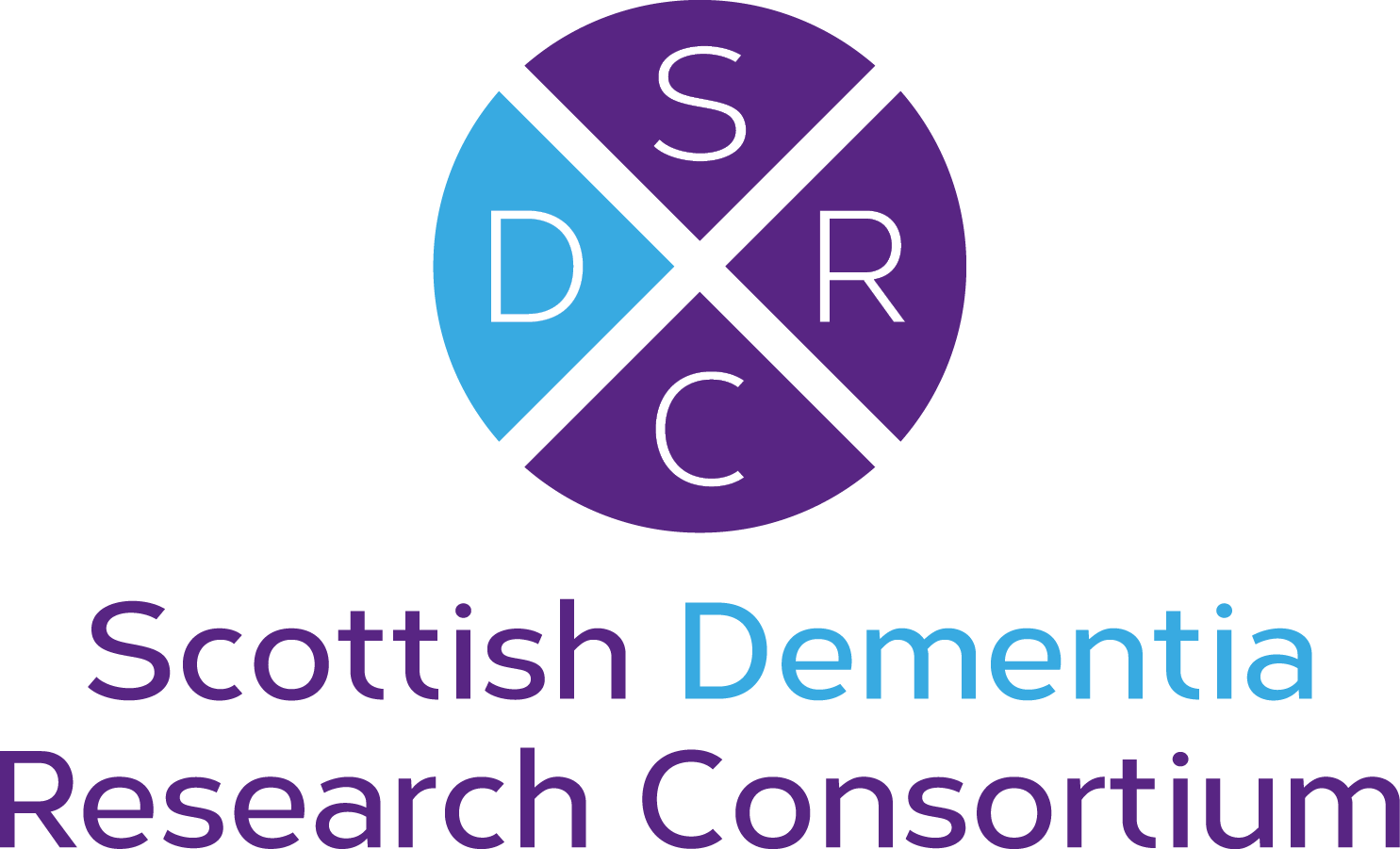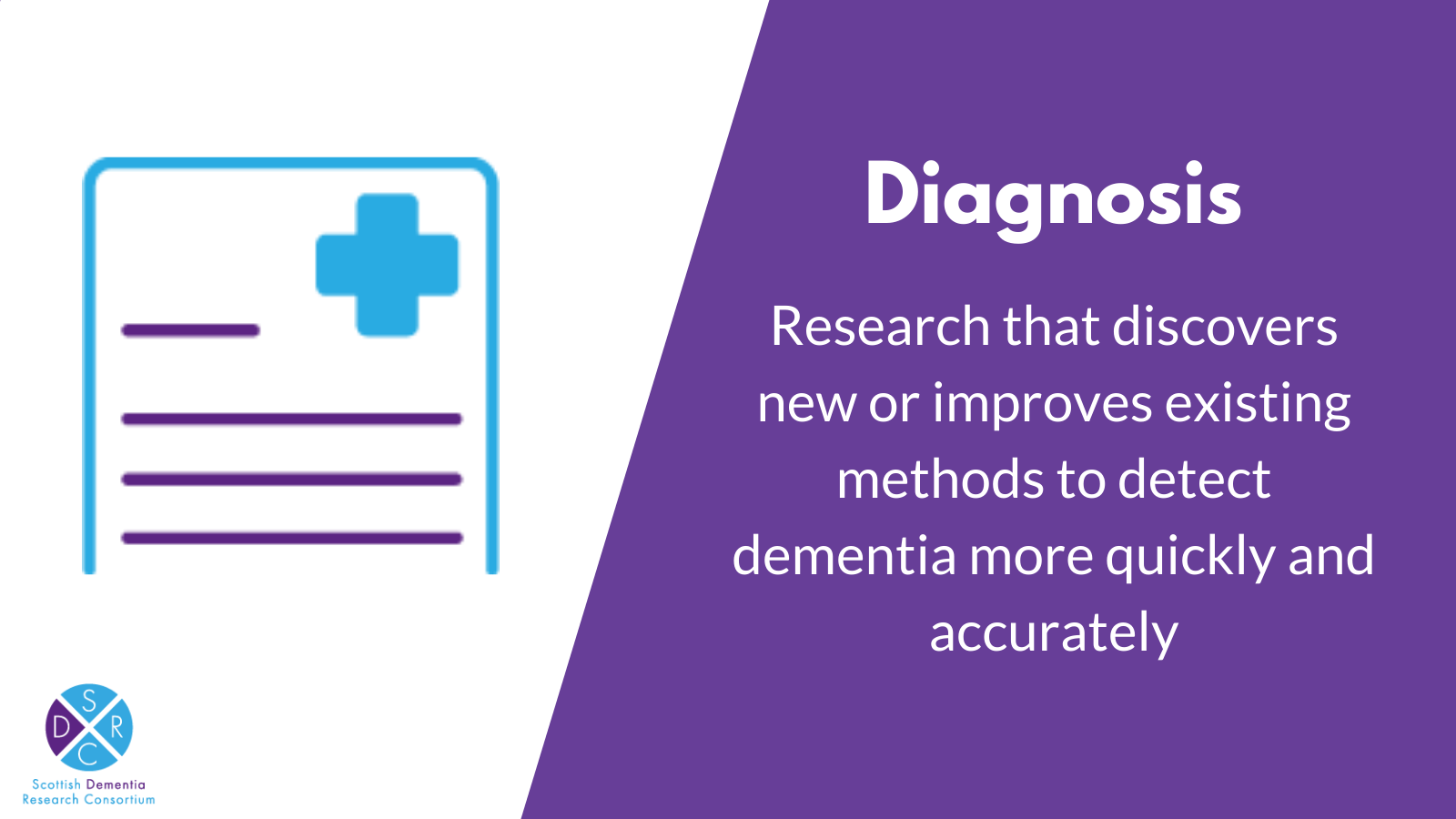This blog is an extract from the SDRC Annual Report 2022/23, dedicates a section to the progress and ongoing work of each of the SDRC research themes. This blog is from the Diagnosis theme, written by theme leads Dr Terry Quinn and Dr Jennifer Macfarlane.
Summary of the theme
The diagnosis theme is focused on the evaluation of new tests and improving the use of established tests. Research in this area investigates how to diagnose dementia or other cognitive syndromes earlier, more accurately or with less burden.
Timely and robust diagnosis is a fundamental part of dementia management. Within the diagnosis remit is everything from technical development of new brain scan protocols through to studies of how to share a potential dementia diagnosis with a person and their family.
If diagnosis is done well, it can help with how the condition is managed and what treatments may be available.
Diagnostic tests are important at all stages of the dementia journey, from biomarkers and neuroimaging which may look for the earliest signs of brain health problems, through to assessments that help us treat and monitor those people living with advanced dementia.
The diagnosis theme often feels like it sits at the intersection of many of the other SDRC themes. For example, development of new technologies for diagnosis and use of big data to improve diagnostics both align with the ‘Technology’ theme. Recent papers by SDRC members looking at disclosure of the dementia diagnosis, fit well with the ‘Living with Dementia’ theme, while work on fluid biomarkers is informed by ‘Fundamental Science’. Diagnosis and the monitoring of treatments frequently rely on imaging ‘Technology’ as well as the application of ‘Informatics’. The synergy between themes is reflected in the convergence of interests and mutual support between SINAPSE, SULSA (Scottish imaging and life sciences pooling groups) and SDRC.
Developments within theme
2022 was a busy time for cognitive diagnosis research in Scotland, with new projects, new technologies and new teams being developed.
There isn’t space to describe all the important work happening in the diagnostics space, so we offer some examples to give a flavour of the variety of activity in the last year.
Research from Scotland has established the association between sub-concussive head impacts (in this case heading in football) and future cognitive problems. New projects using MRI and EEG will now help explore the underlying mechanisms of these changes.
In SDRC our interest goes beyond dementia and we are interested in other cognitive syndromes and neurodegenerative disorders. For example, the innovative work looking at mobile EEG to assess mobility problems in people with Parkinson’s disease; or the suite of projects from Neuroimaging Sciences at Edinburgh Imaging looking at markers of cerebral small vessel disease. The team are working with collaborators from Toronto and Utrecht to assess 30 neuroimaging databases, including several Scottish studies.
Optum UK have recently filed a patent for an image ranking tool designed to support (NOT replace) radiologists. This technology has several potential applications, but they are focussing on the first clinical validation in brain MRI from patients with cognitive decline and dementia working in partnership with a team from Edinburgh University and Hardian Health.
SDRC activity within theme in 2022
SDRC members were involved in many aspects of the forthcoming Scottish Intercollegiate Guideline Network (SIGN) Guideline on Dementia. The content of the Guideline was shaped by researchers, clinical staff, third sector and people living with dementia. The importance of diagnosis in dementia is evidenced by the number of recommendations made that are pertinent to diagnosis. These include sections on neuroimaging and CSF biomarkers, cognitive screening tests, remote assessment and best practice in making and sharing a diagnosis of dementia.
In SDRC we monitor publications from our members, and it has been encouraging to see the number of high profile papers published by Scottish teams that are relevant to diagnosis. The range of titles speaks to the variety of diagnostic research happening in Scotland from assessment of the proteome through to using patterns of speech as an early marker of dementia.
A special mention must go to the researchers who presented their work at previous SDRC conferences and have went on to achieve publications in peer reviewed journals. Hopefully the conference experience and questions from delegates helped improve your papers.
Find out more about the SDRC research themes here

